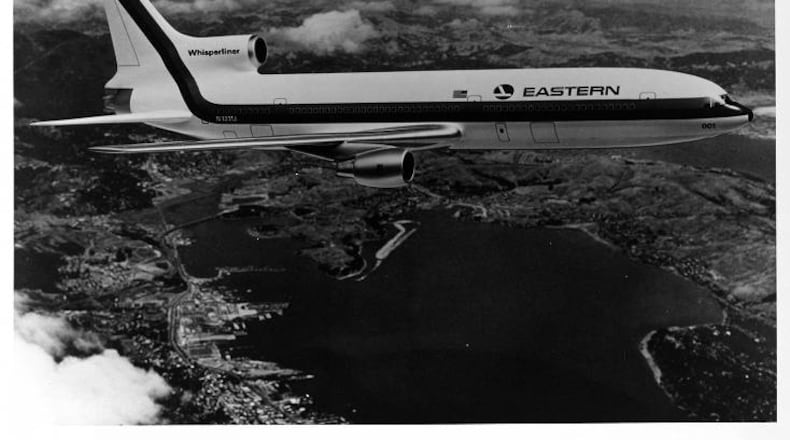Fifty years ago, Atlanta’s airport made its official debut on the world stage, with an inaugural flight to Mexico City.
It’s easy to forget that, once, only domestic flights came out of Atlanta. But on July 1, 1971 Eastern Airlines began flying nonstop from Atlanta to Mexico City. It later added a route to Montego Bay, Jamaica.
With the introduction of the flights that year, the airport was renamed the William B. Hartsfield Atlanta International Airport. What started in 1919 as an airstrip on a former racetrack would go on to become the world’s busiest airport, a place that, as the old joke goes, you had to make a connection through even on your way to the Pearly Gates.
On June 1, 1978, the airport got its first foreign carrier service when Sabena Belgian World Airlines started flights to Brussels.
International flights are “hugely important. It’s hugely important for our economy,” said Charles Shapiro, president of the World Affairs Council of Atlanta and a former U.S. Ambassador to Venezuela.
Shapiro, who grew up in Atlanta, said he remembers when there were rivalries between Atlanta and other cities like Birmingham and New Orleans. It was often debated “who was going to be the leader of the South,” a notion he now calls quaint.
Atlanta, which became known as the city too busy to hate, had “the foresight of having the airport ... and all the things that go with that, to be able to make that pivot to an international city,” Shapiro said. Other cities “were still arguing about stupid stuff, and Atlanta was moving ahead.”
Miami-based airline Eastern had a hub in Atlanta. While it had international flights from other cities, Atlanta waited years for the nonstop to Mexico City, said former Eastern spokeswoman Carolyn Wills.
When Atlanta finally got the Mexico City route, “that was the time when we set up customs, immigration, agriculture at the airport,” she said. Some reports indicate there were earlier flights from Montreal, possibly connecting through New York.
A Hartsfield-Jackson timeline on the history of the airport on its website marks July 1, 1971 as the date of the airport’s first international service.
In 1994, the Atlanta airport opened the 1.3 million square foot international Concourse E, the largest single international airport terminal in the country.
Atlanta’s international status was crystallized in 1996 when the city hosted the Olympics.
Hartsfield became the world’s busiest airport with 73.4 million passengers in 1998. It just lost that status to an airport in China in 2020, when travel plummeted around the globe. Airport officials hope to regain the title.
In 2003, the airport was renamed Hartsfield-Jackson International, in honor of the city’s first Black mayor.
And, in 2012, Hartsfield-Jackson opened the Maynard H. Jackson International Terminal, introducing a new 12-gate international Concourse F.
The original Eastern Airlines went out of business in 1991. A newer carrier, based in Miami with flights to South America, is now using the name. Eastern’s shutdown left Atlanta-based Delta Air Lines as the dominant carrier at Hartsfield.
Though international flights have been significantly reduced during the pandemic, “It’s starting back up,” Shapiro said. “People are starting to fly again, starting to travel internationally.”
Still, a bevy of travel restrictions remain, and many believe it could take years for international travel to fully recover.
Metro Atlanta Chamber vice president of global commerce John Woodward said international flights are key to attracting companies to Atlanta.
“There’s certain seminal events in the international growth of Atlanta and the international reputation of Atlanta. The Olympics absolutely is a primary one, but that first international flight and those international flights that followed are definitely one and they contributed to our international growth,” Woodward said. International flights “really can be a deciding factor in closing a deal.”
About the Author
The Latest
Featured



